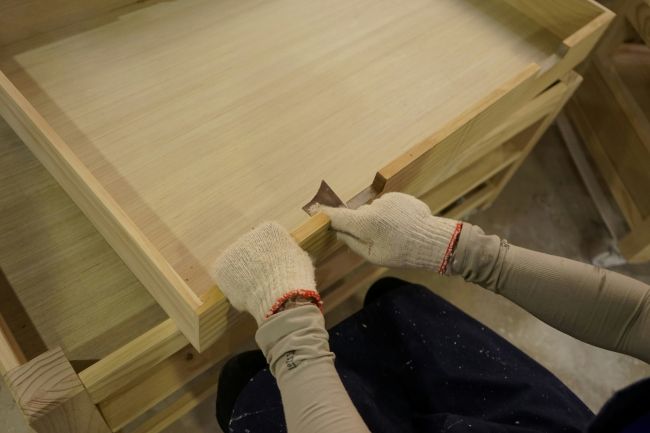How to Choose the Right Beading for Skirting Boards and Walls

Why Beading Matters in Interior Design
Beading might seem like a small detail, but it plays a big role in finishing the look of a room. Whether it’s framing skirting boards, creating stylish wall panelling, or adding depth to otherwise plain walls, beading is one of the most versatile design features you can use. The right beading can turn a simple wall into a standout feature and give skirting boards an extra layer of polish.
When chosen carefully, beading provides a balance of function and style. It hides gaps, protects edges, and at the same time adds elegance to your home.
What is Beading?
Beading is a narrow strip of decorative moulding that is applied to surfaces such as walls, skirting boards, doors, or ceilings. Traditionally used in more classic homes, beading has become increasingly popular in modern interiors too, thanks to its ability to add subtle detail without making a space look busy.
It comes in a wide variety of materials, shapes, and sizes, which means you can tailor the look to suit your home. From simple square-edged strips to more detailed mouldings, there’s a type of beading for every design style.
Types of Beading for Skirting Boards and Walls
You can explore a wide range of options, from simple square profiles to timber beading, to decorative mouldings, depending on the look you want to achieve. Choosing the right beading starts with understanding the different options available.
Square Bead
This is a modern and minimal option with clean edges. It works well in contemporary interiors where straight lines and simplicity are key.
Half-Round Bead
A softer option with a curved surface. It is often used to create smooth transitions and can make a room feel less formal.
Scotia Bead
Commonly used to cover expansion gaps, particularly around flooring and skirting boards. It’s practical as well as decorative.
Decorative Profiles
Ornate beads with carved designs add traditional charm. These tend to suit period properties or rooms with classic interior design.
Panel Mould Beading
Used to create panelling effects on flat walls. Strips of this beading can be fixed in rectangular or square patterns and then painted for a stylish finish.
Materials Used for Beading
Beading can be made from a range of materials, and your choice will affect not only the look but also durability and cost.
- MDF – Affordable, easy to paint, and widely used in modern interiors. Ideal for panelling projects.
- Softwood – A natural timber option that can be painted or stained. More flexible than hardwood, making it easier to work with.
- Hardwood – Durable and elegant, often used in traditional or high-end designs. More costly and less flexible than MDF or softwood.
- Plastic/PVC – Moisture-resistant, making it a good choice for bathrooms or kitchens where humidity is high.
For most homes, MDF is a practical choice as it combines affordability with a smooth surface ready for painting.
Where to Use Beading
One of the biggest advantages of beading is its flexibility in design. Some of the most common uses include:
- On skirting boards – Adding beading above or below skirting creates depth and a layered effect.
- For wall panelling – Beading strips arranged in patterns turn plain walls into feature walls.
- Around doors and windows – Beading frames these features neatly and adds subtle style.
- On furniture and cabinetry – Beading is also used on wardrobes, cabinets, and doors to give a bespoke look.
How to Choose the Right Beading
Selecting the best beading depends on a few key factors:
Style of Your Home
Modern homes often look best with simple square or slim-profile beads, while older or period properties may suit decorative or half-round beading.
Size of the Room
In smaller rooms, thinner beading keeps the space feeling open and uncluttered. Larger rooms can take bolder profiles without looking overwhelmed.
Function
If the beading is purely decorative, you have more freedom of choice. If it’s being used to cover expansion gaps or protect edges, practicality comes first.
Budget
MDF is the most affordable and widely available, while hardwood is a premium choice. Balancing cost with the finish you want is important.
Colour and Finish Options
Beading can either blend in with your walls and skirting or stand out as a feature.
- Blended look – Painting beading the same colour as walls or skirting creates subtle texture.
- Contrasting look – Using darker or lighter paint highlights the beading as a design feature.
- Natural wood – Staining timber beading keeps the warmth of natural grain, perfect for traditional interiors.
Installation Tips
Installing beading requires accuracy to achieve a neat result. Here are some tips:
- Measure carefully before cutting
- Use adhesive as well as pins for secure fixing
- Fill any gaps with filler before painting
- For curved walls, consider flexible beading options
Flexible skirting and beading products are designed to bend, making them perfect for bay windows or rounded walls. This avoids the need to cut lots of small sections.
Why Professional Fitting Can Help
While DIY installation is possible, professional fitting ensures joints are precise and finishes are smooth. This is especially important for large panelling projects or curved features, where accuracy makes a big difference to the overall look.
Maintenance and Care for Beading
Once installed, beading requires very little upkeep, but a little care goes a long way in keeping it looking sharp. Regular dusting and occasional repainting or touching up help maintain a fresh appearance, especially in high-traffic areas where scuffs are common. In rooms like kitchens or bathrooms, where moisture levels are higher, using a moisture-resistant paint or sealant on your beading can prevent swelling or damage over time.
Final Thoughts
Beading is a small detail that makes a big impact in interior design. From adding elegance to skirting boards to transforming plain walls into stylish panelled features, it offers endless possibilities. The key is choosing the right type, profile, and material for your home.
Whether you prefer simple square beads for a modern look or decorative mouldings for a classic feel, the right beading can elevate your interiors. Combined with the right finish and careful installation, it will give your home a polished and modern appearance that lasts.


